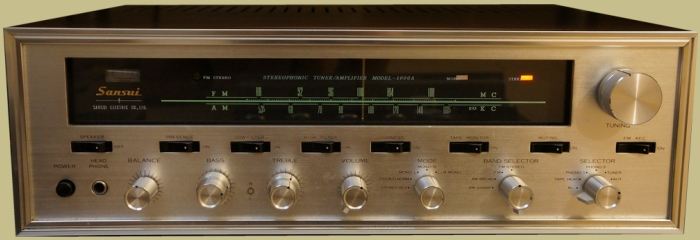
Sansui made a number of iconic receivers during their run as one of the top audio producers in the world. One of those is the classic Sansui 1000A. The 1000A is a tube receiver is known for its big and powerful sound. The A revision added bias adjustment for the 7591A output tubes. The receiver pushes out 40 watts of clean power per channel.
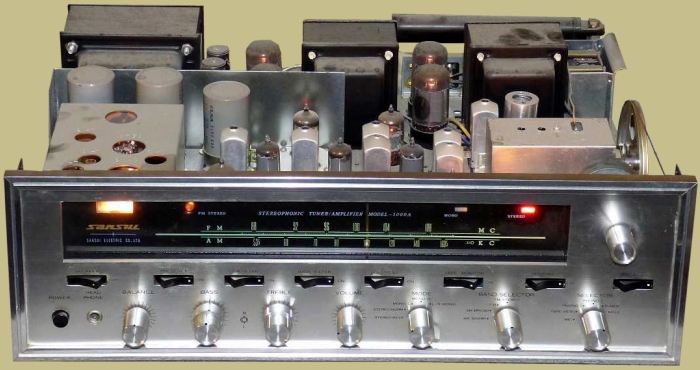
The phono section does use transistors but the two top level inputs and the tuner are all tube. Unfortunately the phono section uses old germanium transistors which are somewhat difficult to replace since there aren’t really modern equivalents. It can be done however. I know that some people will utilize a small outboard phono preamp and use the tape monitor loop instead.
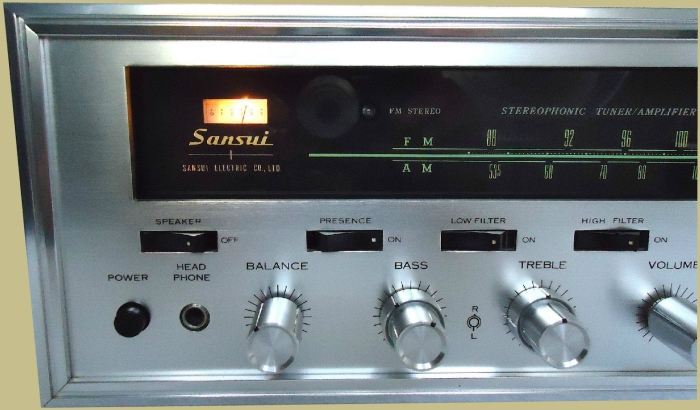
Speaking of old parts the 1000A’s also have old oil filled capacitors in them which when powered up for the first time after many years can have explosive effects. Best case would probably be to replace them all but you could also bring the receiver up to power very slowly with a variac. Still, I think most would agree that replacement is the best course of action.
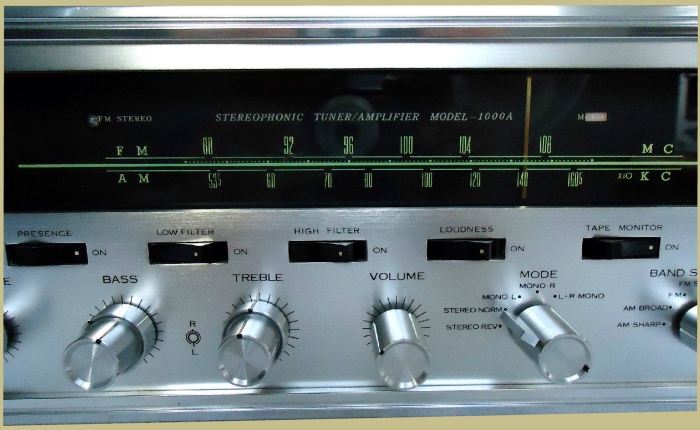
An interesting feature of the 1000A is that the low frequency filter works on the aux and tuner. Usually it is only used on the phono circuit to remove record rumble. It also has both Presence and Loudness switches which seems a little redundant.
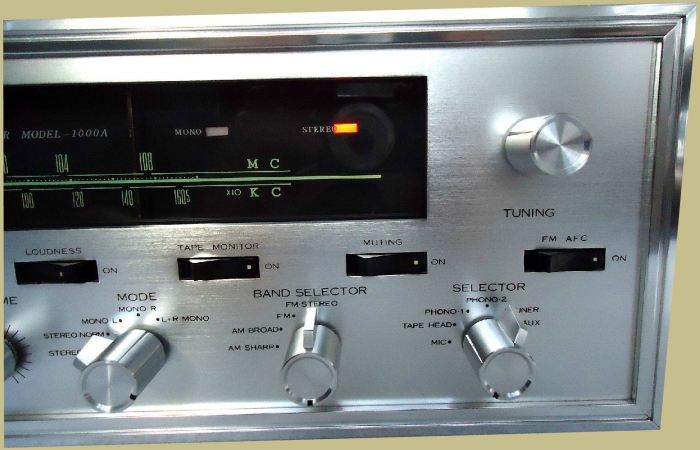
Some of you may already know this, but the real secret behind the 1000A and many other Sansui audio products is their use of Hashimoto transformers. Hashimoto Electric was started in 1958 and has built high quality transformers practically ever since. Sansui was one of their main customers so many of their products have Hashimoto iron in them.

The Sansui 1000a came with a metal case but many user removed it due to the large amount of heat that the unit generates.
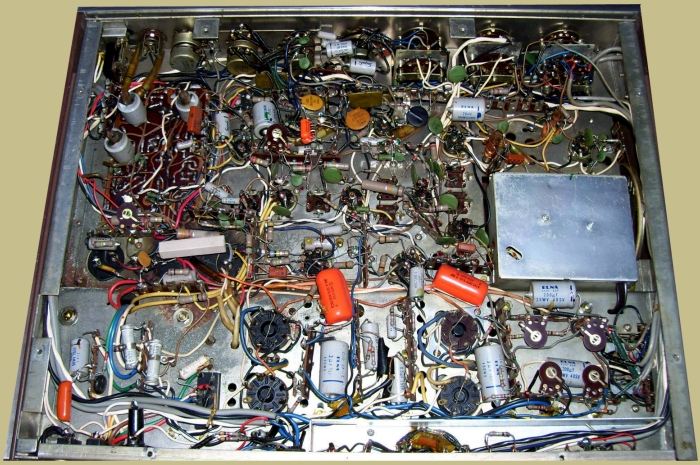
The 1000 version is much harder to find than the 1000A and there are actually a few different versions of the 1000A as well. The 1000 was only made for a year before revisions were made and the 1000A came out.

Some feel that the Sansui 1000A is the best sounding tube receiver ever made. That’s saying a lot when comparing it to the popular Fisher 500C or 800C. Nonetheless, it definitely performs to high standards which means it is also in high demand.
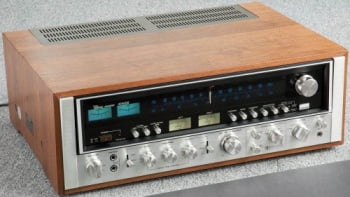

I am going to dust off my sansui 1000a which hasn’t seen daylight in 35 years. Put in box after one power transformer died. Can somebody help me get on the right path to breathing life into this unit again? Dean at bluthaang at aol.com
Audiokarma has a forum dedicated to Sansui equipment. A lot of helpful people there as well. You can find it HERE.
Dear manager
I have this reciever.it was great but one of my friend suggested that i could chang the orginal tube with new tube (upper class) for better output i did it. for first month i got better voice after that my new tube showed too much heat and light .i was so afriad so i removed new ones with orginal.now i see some parts show too much heat.i am so glad if i have your suggestions.
Best regards
Rad
The 1000a runs hot. I blow a small fan in the rear pointed at the output tubes and transformers.
I recently acquired a 1000A from my father-in-law. It sat in the dusty basement for several year and probably hasn’t been plugged in since the mid-70s. I’m cleaning it carefully, but haven’t powered it up. I see the comment regarding bring up the voltage slowly with a variac to protect the caps, but how slowly is slowly? Would starting at zero be necessary and, say, bring it up to 117V in about 1-2m or should it be even slower?
Any other tips other than replace the caps? I just want to test it and don’t really want to fully restore or invest in it. It has a transformer dated 1972so it is a later model. Any help is graciously accepted.
Bring it up slowly over 5 min and see what you get. Watch all tubes for red plating over the next half hour. I replaced all the caps and a few resistors in mine and use it often, wonderful sound.
I have a 1000 my dad brought back from Germany when he was in the army. I’m trying to get it up and running. Can you suggest someone in Wilmington North Carolina to work on this? thanks
I have the exact same one as this and I’m trying to see if anyone knows how I can sell it. Mines it belonged to my father in-law who had past on and lefted it behind. My email is nomansluv55@gmail.com. my name is Ginnie my number is 559-492-7195
I have a Sansui 1000A bought new in Japan in 1965. It produced beautiful sound. Unfortunately, it hasn’t been used since 2004, but all systems worked well then. When last plugged in there was an issue with its volume being almost non-existent. Anyone have any thoughts or know of a service business in the Metro-Atlanta, GA area?
I’d start with cleaning the volume potentiometer (and the other too) with electrical contact cleaner like De-Oxit. It’s probably dirty which can cause erratic volume issues.
Thanks, I’ll check it out.
I have a Sansui 1000A on my workbench. I changed the two main filter capacitors and the two voltage doubler diodes. A great improvement in sound can be realized by changing the four driver-to-output coupling capacitors. Auricap XOs and Obbligato capacitors are my coupling caps of choice. They never disappoint. I’ve done this on many vintage amplifiers. A number of tubes test weak and must be replaced. In addition, more general maintenance is required. The big problem today is that tubes and capacitors are outrageously expensive. For instance, I just checked the prices of Auricap XO capacitors, and I’ve come to the conclusion that I can’t afford to buy these anymore.